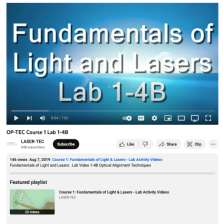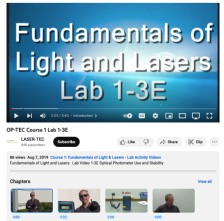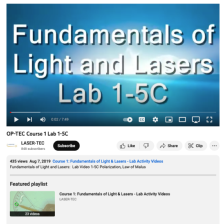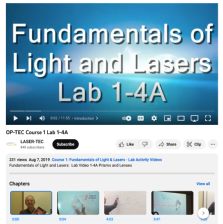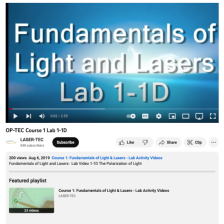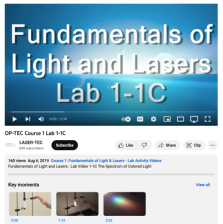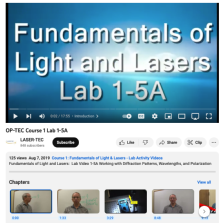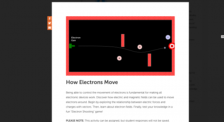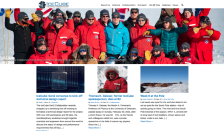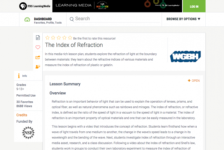Browse Resources
Resources |
|---|
This lab activity, presented by John Chamberlain, demonstrates techniques for optical alignment that will be useful to students in completing subsequent laboratory activities in this series. In the seven-minute video, Chamberlain shows both the rough and fine horizontal adjustment of a laser beam to...
This lab activity, presented by John Chamberlain, demonstrates the use of a photometer. In this six-minute video, Chamberlain uses the photometer to take readings of the sun's light as well as a reading of a helium neon laser beam. This three-part lab, 1-3E, is one in a series of 20 available on the...
This lab activity, presented by John Chamberlain, focuses on Malus' law and the angle between two polarizing filters. In this 8-minute video, Chamberlain demonstrates the set-up for the lab and the process of taking measurements with an analyzer in order to calculate predicted angles. This lab, ...
This lab activity, presented by John Chamberlain, examines the effects of prisms and lenses on light emitted from a laser. In first part of the twelve-minute video, Chamberlain demonstrates refraction of light through a prism, and the measurement and calculation of the angle of deviation produced...
This lab activity, presented by John Chamberlain, covers the the polarization of light using filters. In this four-minute video, Chamberlain demonstrates the use of a flashlight, stand, reflective surface, and polarizing filters (including one used as an analyzer) to examine planes of polarization. ...
This lab activity, presented by John Chamberlain, examines the spectrum of colored light as it passes through a diffraction grating. In this four-minute video, Chamberlain demonstrates the use of color filters, stands, a flashlight, and the diffraction grating to identify and modify ranges of color...
This lab activity, presented by John Chamberlain, demonstrates the measurement of diffraction and wavelengths from a laser. The first part of this 18-minute video shows the measurement of the Fraunhofer diffraction pattern from a pinhole, including the calculation of the needed distance between the...
This resource provides an introductory activity on how electrons move. Core concepts include the discovery of the electron, electric forces and fields, how an electron moves in an electric field, designing an electric field, magnetic fields and how an electron moves in a magnetic field. The...
This website provides information about the University of Wisconsin-Madison's IceCube particle detector located at the South Pole. IceCube is the world's largest neutrino detector that searches for violent astrophysical events such as, "exploding stars, gamma-ray bursts, and other cataclysmic...
Refraction is an important behavior of light that can be used to explain the operation of lenses, prisms, and optical fiber, as well as natural phenomena such as rainbows and mirages. The index of refraction, or refractive index, is defined as the ratio of the speed of light in a vacuum to the speed...
|
| ← PreviousNext → |
